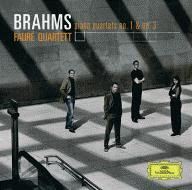Obscuring the Beat (2)
Harmonic movement is one way composers are taught to create a sense of tension in a piece. By speeding up the harmonic movement as a piece nears the end of a section, the music feels as if it speeds up, the tension increases and a "peak" is achieve in preparation for the cadence. Yet adjusting the rhythm of piece can have a similar effect in terms of keeping the piece shifting through peaks and valleys.
In Bach's Jesu, Joy of Man's Desiring, the syncopated or off-beat start to the upper melody gives a lift to the piece. The lower on-beat rhythm tends to move down at the beginning of the phrase. With the upper part starting on the off-beat and rising from that point, there is a strong sense of hope. The music feels rejuvenated.
A hemiola creates a feels of hesitation in the music. In complex time, the music is "dancing along" in some sort of triplet feel when it is slowed down into a duplet. This hesitation creates a similar feeling to a rallentando without actually changing the beat or tempo of the music. And since a hemiola is just a brief occurrence, it acts as a brief respite for the music, which then continues on at the previous pace.
Both of these forms of beat manipulation are fairly simple and yet can still very effective for modern composers. The key is to understand the effect these techniques have on the music and then knowing when the technique can have the greatest impact in the overall scope of the piece.
 In my Prelude 2, the music starts on an off-beat and climbs up from an F to
an A. This starts the music with a lifting motion. However, the melodic line
then descends down to the A an octave below. So, while the piece starts with
a lift, the overall musical line is a descent. The same sort of lifting motion
before a descent is found in bar 5 in the left hand of the piano (bass line).
These little off-beat moments provide a slight lift (or peak) to the melody
before we journey down through the valley.
In my Prelude 2, the music starts on an off-beat and climbs up from an F to
an A. This starts the music with a lifting motion. However, the melodic line
then descends down to the A an octave below. So, while the piece starts with
a lift, the overall musical line is a descent. The same sort of lifting motion
before a descent is found in bar 5 in the left hand of the piano (bass line).
These little off-beat moments provide a slight lift (or peak) to the melody
before we journey down through the valley.
The piece is in complex time (6/8) with a triplet feeling. The last bar of the opening phrase (bar 4) has a hemiola which slows then end of the phrase down just as another line starts. The next hemiola doesn't occur until bar 13, which is the midway through the complete melodic line for this prelude. Bar 21 and 22 end the melodic line and another hemiola appears, slowing the piece down in preparation to begin again. The hemiola acts as a phrase marker, slowing the piece down at points in preparation for something new to begin. They break up the overall phrase to give it a sense of motion with peaks and valleys in terms of tempo.
Prelude 2 is a jazz piece with a laid back feel. The techniques of off-beat starting notes and including a hemiola at cadence points are old compositional tools. However, using these techniques in a "modern" jazz piece has the same effect - the slowing of the tempo before cadence points to heighten the laid back feeling. The simple techniques help music move in interesting ways. While these may seem like old and archaic compositional tools, understanding these tools can help even the most modern of pieces stay interesting.

Comments